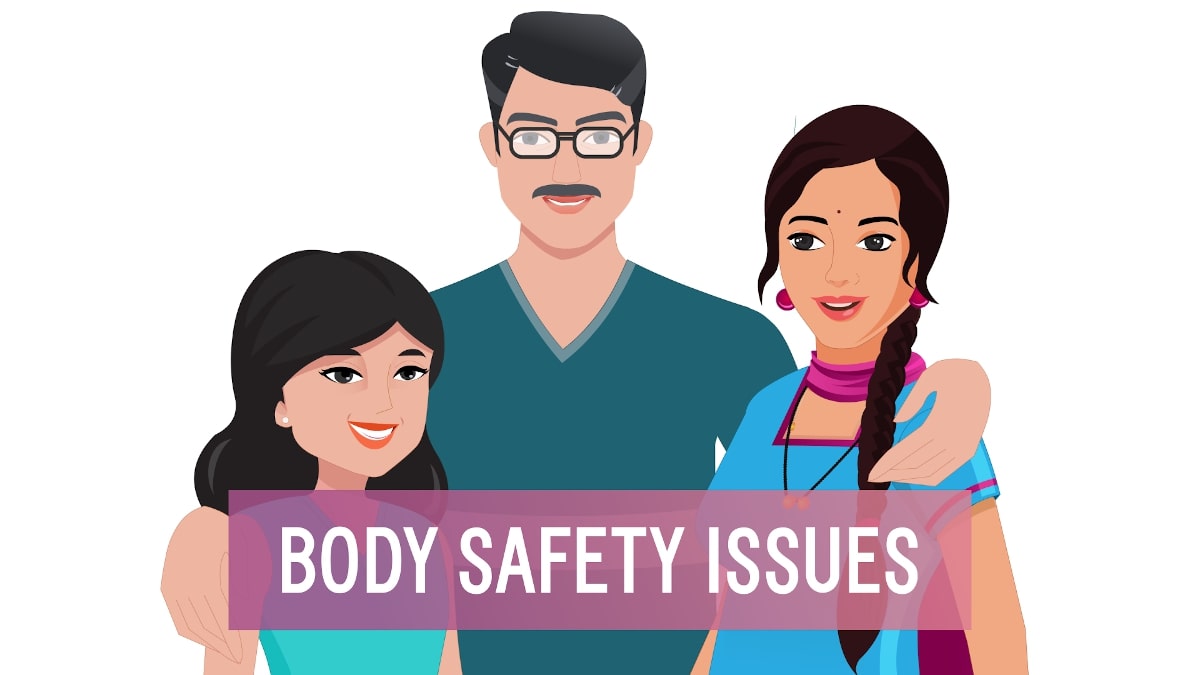One of the toughest decisions that a lot of teens face is whether to have sex.
By adopting a birth control or contraception method, girls can avoid such situations, and hence the awareness about the different types of contraception, their benefits, usage, and ease of access are critical.
Factors That Increase the Risk of Early Sexual Activity in Adolescents
- Low socioeconomic status
- Living in a single-parent home.
- Engaging in risk-taking behavior (e.g. cigarette, alcohol, drug use)
- Having sexually active peers
- In some cases, early or rapid pubertal development


Awareness about Birth Control
- It is best when a parent talks openly to their teen about their changing body and about sex and birth control. Seeking information online or relying on friends solely may lead to misinformation.
- A parent should start discussions about sex education early with their child, and share information long before they are sexually active. They should check whether their child knows about preventing pregnancy, protecting themselves from STIs, and safe sex.
- If parents are uncomfortable talking about this topic, teens should be encouraged to discuss birth control options with their family doctor or specialist.
What’s the Best Birth Control for Teens?
Abstinence, which is not having sex, is the surest way to avoid unwanted pregnancy and STDs, else, birth control options should be evaluated and used. Birth control methods have other benefits as well and can help with menstrual cramps, heavy menstrual flow, and acne.
The following factors should be considered when helping an adolescent choose a contraceptive method.
● Acceptability: Is it a method the patient will continue to use consistently?
● Effectiveness of method and frequency of intercourse: Does the method lend itself to the unplanned coital episode often seen in this age group.
- The number of partners and STD concerns: Is the patient adequately protected?
- Cost of and access to medical care: Can the patient afford the method on a long-term basis?
- Motivation and self-discipline of patient and male partner: Will a need to interrupt foreplay result in the nonuse of the method?
- Safety and risk: Will short-term convenience result in long-term drawbacks?
- Personal religious and/or parental philosophy: Will it influence usage?
Understanding the benefits and risks of each birth control method will allow the teen to choose the right method for her.
Intrauterine devices (IUD and IUS) are long-acting, reversible contraceptives. It is a small, often T-shaped device placed inside the uterus by a doctor
- One does not need to remember to use it daily or before having sex
- Less than 1 in every 100 females get pregnant during a year
- Can be used long-term (5 -7 years) and be removed at any time by a doctor.
- May increase menstrual bleeding and cause menstrual cramps
Hormone pills are one of the most popular methods of birth control. Once prescribed, it can be easily accessed and is a cost-effective option. There are 2 types of pills, i.e, a combination of estrogen/progesterone, and progesterone-only. Birth control pills are 91% effective at preventing pregnancy. It is a good option for anyone who prefers a short term method, but one has to remember to consistently take the medicine. It may cause irregular bleeding, sore breasts, nausea, or headaches.
The birth control patch combines the hormones estrogen and progestin. It is usually placed on the arm or backside but one has to remember to apply and remove it on time. About 9 in every 100 users will get pregnant during the first year. It may cause the same side effects as the pill.
Additionally, it may lead to Irritation or discoloration of the skin under the patch.
- The vaginal ring is a soft small circle of plastic that releases hormones similar to the combination pill that needs to be inserted into the vagina and removed after every 3 weeks. It has 91% effectiveness in preventing pregnancy. It may have the same side effects as the pill and can additionally cause vaginal irritation or discharge.
- Hormone injections are 94% effective at preventing pregnancy and are given by a doctor every 3 months. It can cause weight gain and irregular periods and can also cause reversible bone loss.
- Norplant is a sustained-release, subdermally placed progestin (levonorgestrel) contraceptive device consisting of six thin flexible capsules made of silastic rubber designed to remain in place for up to 5 years. Advantages include ease of continuance and lack of need for daily compliance, interruption of foreplay, or cooperation of the male partner.
- Emergency contraception available over the counter can be used shortly after having unprotected sex or if a condom breaks to prevent pregnancy. It is a “back up” method and should not be used as a primary method of birth control. Better known as the morning-after pill, the birth control pill as used for emergency postcoital contraception is the single most underutilized form of birth control. It is not intended for routine use; rather, it is designed for use by a patient who has had unprotected sexual intercourse in the prior 72 hours. These women generally fall into two categories: those who have been victims of sexual assault (including date rape) and those whose usual method failed while attempting to practice responsible contraception (i.e. broken or leaking condom). The original Yuzpe method consists of two 50-μg Ethinyl estradiol/norgestrel pills taken as soon as possible within the 72-hour time frame, followed by two additional pills taken 12 hours later. Thirty- or thirty-five-microgram Ethinyl estradiol pills combined with norgestrel or levonorgestrel may be used, but four must be ingested at each dose, for a total of eight pills
Barrier Methods
1. Male Condoms are 82% effective at preventing pregnancy, however, it is the only birth control option that provides protection from HIV and STIs. Ideally, condoms should be used in combination with another contraception method.
2. Female Condoms The female condom (Reality) is the only women controlled device that protects against both unintended pregnancy and STDs, including HIV. It is a polyurethane sheath that is inserted into the vagina, with a flexible internal plastic ring that holds the top of the sheath near the apex of the vaginal vault. The sheath extends to partially cover the external genitalia. The effectiveness rates approach 97%. Disadvantages include its somewhat
unusual appearance and the slight crackling sounds heard during coitus when used without a lubricant (now included in the packaging), both of which may be more discouraging to the adolescent than to the older patient.
3. Diaphragm As a relatively inexpensive form of birth control that affords some STD protection, the diaphragm can be a suitable option for a well-motivated teen in a stable relationship. It may disrupt foreplay to a lesser extent than condoms, although patients should be reminded that insertion of additional spermicide prior to each coital episode is required for optimal effectiveness (81%–98%), and the diaphragm must remain in place for 6
hours after sexual contact.
4. Cervical Cap The cervical cap is similar to the diaphragm except that it covers only the cervix. For this reason, it is slightly more difficult to insert; many young patients are not dexterous enough or comfortable enough with their own anatomy to check high in the vagina for proper cervical coverage or cap dislodgement. Forgetting to fill the cap one-third full of spermicide or removing the cap less than 8 hours after coitus are other possible causes of
user failure.
Sterilization.
In certain cases of mentally retarded or severely physically handicapped young people, sterilization may be the best contraceptive option. This category would include drastic chronic disability without hope for significant improvement, in which the individual’s capacity for self-care, learning, independent living and economic self-sufficiency are limited. 40 These patients are often partially or wholly institutionalized and consequently are at higher risk for sexual victimization than the average teenager. They lack the emotional maturity and cognitive ability to distinguish between appropriate and inappropriate physical contact and usually have been inadequately counseled regarding sexual intimacy.
Accompanying physical disabilities add to their dependency on their caretakers, psychosocial isolation, and lack of access to preventive health care.
Enhancing adolescents Compliance.
All reversible methods of contraception must be used correctly and consistently if their contraceptive effect is to be maximized. Spending extra time for patient education on the first visit increases the likelihood that a return visit for continued services will follow. Patients should be encouraged to bring their parents or friends for moral support, and whenever possible, the male partner should be involved in the discussion of contraceptive options and benefits to enhance the couple’s sense of mutual responsibility and maturity.
1. Remind patients that all interactions and records are confidential
2. Educate patients about additional benefits of their method (e.g. less dysmenorrhea with oral contraceptives)
3. Reassure patients regarding perceived side-effects of their chosen method (e.g. weight gain with oral contraceptives) even if the patient does not inquire
4. Encourage patients to call with questions or when needing prescription refills rather than discontinuing their method
5. Provide samples of oral contraceptives, condoms, spermicide, and so on whenever possible
6. Encourage concomitant condom use (latex type, with spermicide) to teens using other methods, on each visit
7. Make teens aware of the availability and safety of the “morning-after pill” in cases of sexual assault, date rape, or contraceptive failure (e.g. broken condom)
8. Encourage patients to bring along their male partner to office visits to increase their degree of involvement and sense of mutual responsibility
CONCLUSION
Choosing the birth control method that’s right for you can sometimes be a bit confusing. There are many different factors to consider, such as what methods will cause irregular bleeding patterns, which will protect against STIs, and how accessible they are to you. Discussing the options with your health provider will help in finding the method of birth control that works best for you.
Special Thanks to Dr. Alok Sharma, MD, DHA, MICOG Consultant Obstetrician and Gynecologist & Infertility Expert)







